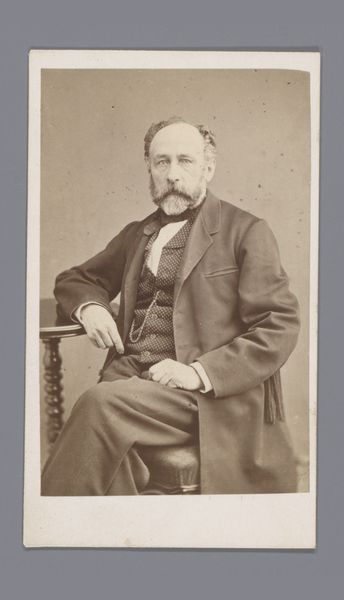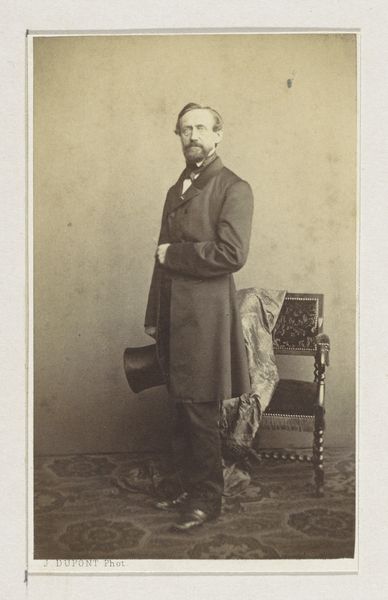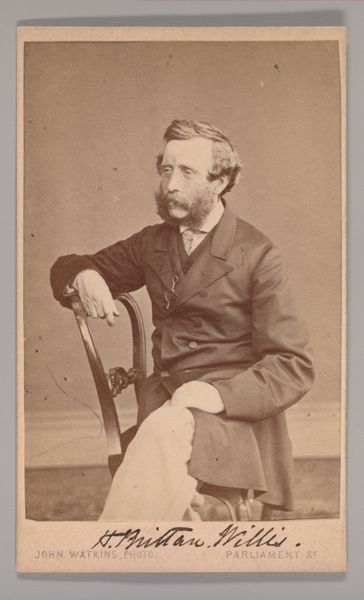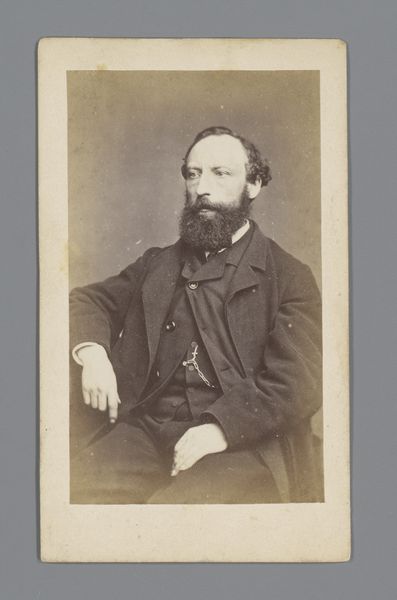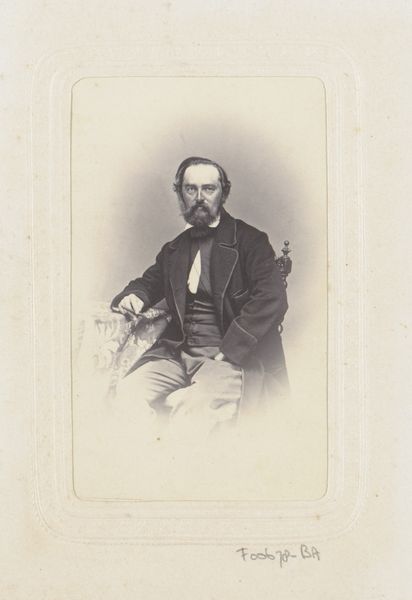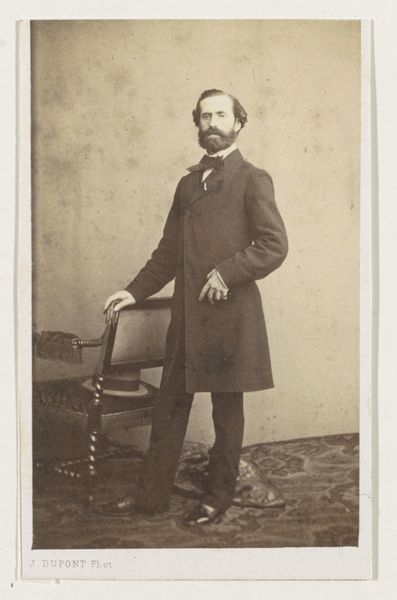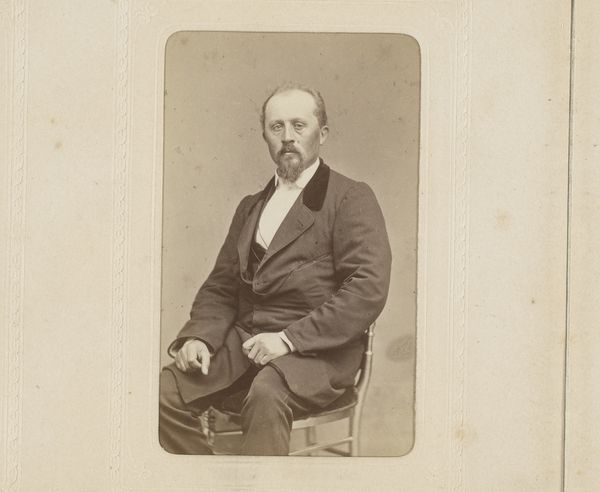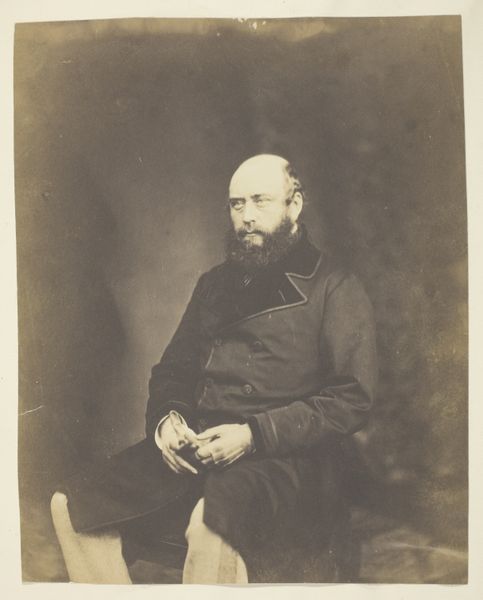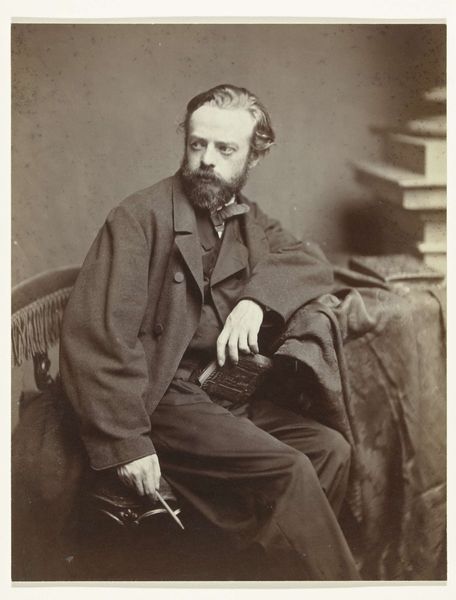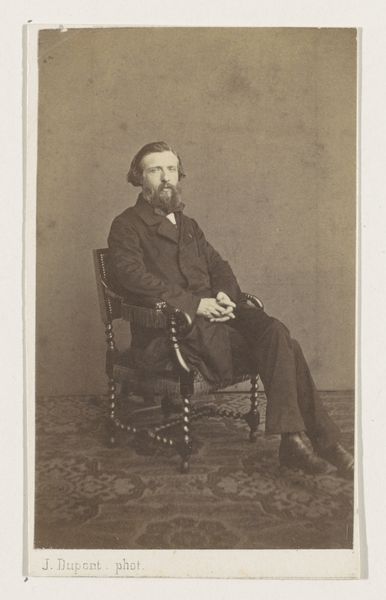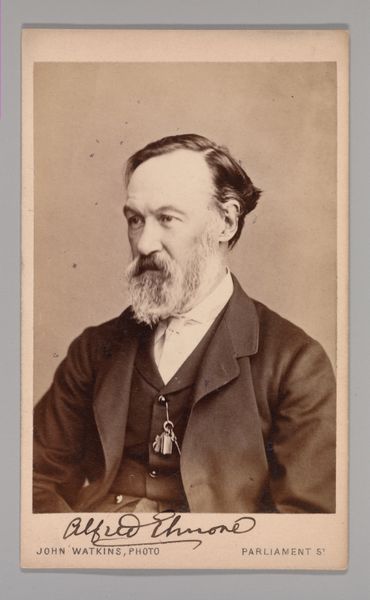
Copyright: Public domain
Editor: This is Felix Nadar’s portrait of Emile Zola, taken in 1902. It’s a striking photograph, almost austere. There's so much detail; you can almost feel the texture of his clothes and the weight of those books. What stands out to you in this image? Curator: I see a careful construction of the artist as intellectual laborer. Nadar wasn't just capturing Zola's likeness; he was constructing an image deeply rooted in the material conditions of literary production. Look at the ornate desk, the crowded bookshelves, even the inkwell. How do these objects contribute to our understanding of Zola's work? Editor: They definitely portray him as a man deeply immersed in his craft and surroundings. So, are you saying these are props that contribute to the representation of Zola’s social role? Curator: Exactly! Photography in this era was still tied to elaborate and expensive processes. The choice of setting, the control over lighting – it all speaks to a deliberate effort to position Zola within a specific social and economic framework. Consider Nadar’s own status as a commercial portraitist. How might his own material concerns as a photographer have influenced this portrayal of Zola? Editor: So the image reflects the labor of both Nadar and Zola within their respective fields? Curator: Precisely. The image becomes a document of intertwined material practices and social positions. Even the choice of black and white photography underscores this, pushing beyond superficial realism to highlight form, texture, and ultimately, the means of production. Editor: I never thought about a photograph having so many layers of production embedded within it. That gives me a completely new perspective! Curator: Seeing art through the lens of its making changes everything, doesn't it?
Comments
No comments
Be the first to comment and join the conversation on the ultimate creative platform.
